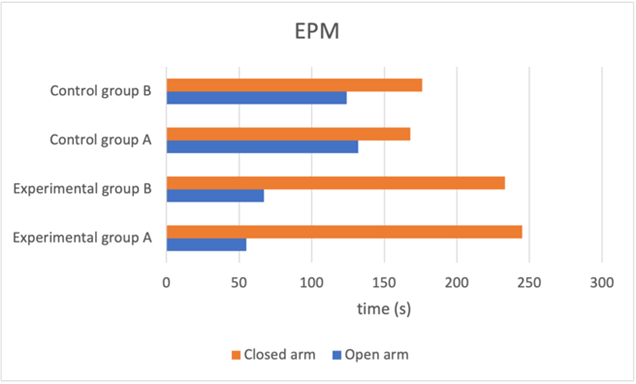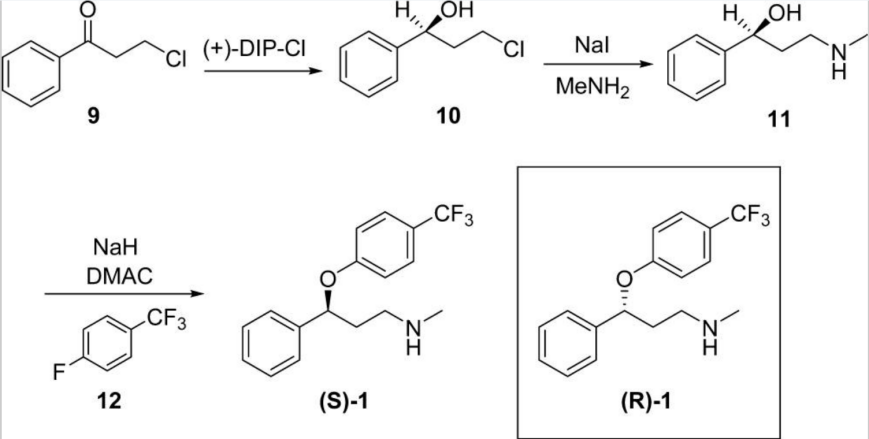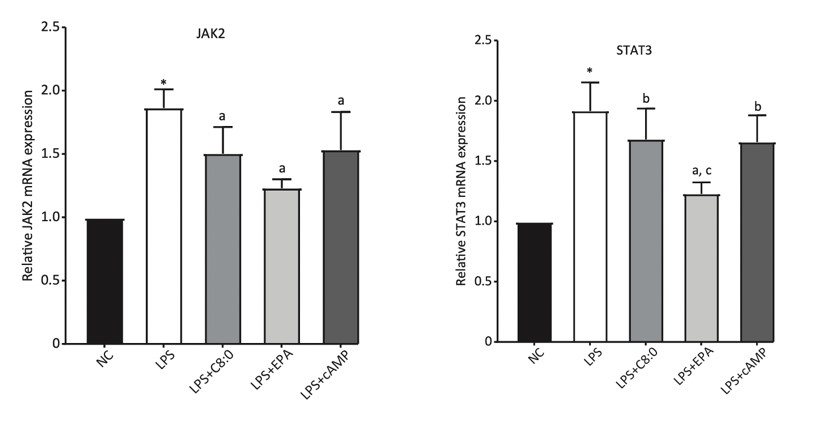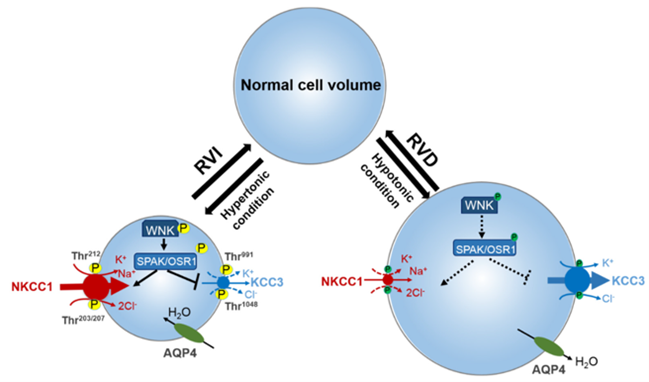

Volume 46
Published on July 2024Volume title: Proceedings of the 2nd International Conference on Modern Medicine and Global Health

The increase in excitability of newborn adult neurons had been shown to have an antidepressant effect in rodents in previous studies, however whether the same result would apply to mature neurons remains unknown. This paper therefore proposes two experiments that investigate the role of neuroplasticity and mature neuron excitability in reducing depressive behaviour in rodents. Old neurons are known to have reduced neuroplasticity compared to newborn neurons, and the main factor influencing this seems to be the reduced NMDA:AMPA receptor ratio in mature neurons. By knocking out the NR1 gene that codes for the NMDA receptor in newborn neurons, experiment one investigates whether reduced neuroplasticity in the rodent hippocampus would induce anxiety-like behaviour, thus the importance of adult hippocampal neurogenesis (AHN) in maintaining neuroplasticity in the brain and normal affective behaviour. Subsequently the artificially made-mature neurons in the hM4Dq+ tamoxifen inducible Cre-recombinase transgenic mouse line are being activated through injection of tamoxifen followed by CNO, which increases neuronal excitability. This is hypothesised to reduce depressive behaviour to an extent however less effective than activating newborn neurons. These experiments can potentially be valuable in the application of relevant depression treatments in humans, alongside with the maintenance and stimulation of AHN with regards to its anti-depressive effect

 View pdf
View pdf


This review explores the role of spermidine, a naturally occurring polyamine, in promoting healthy aging and increasing lifespan. Spermidine was initially discovered in human sperm, and it is important in several cellular processes across eukaryotic organisms. We deeply study the historical background of spermidine discovery and its research developments. The paper examines the mechanisms through which spermidine influences lifespan, including its interaction with RNA, stimulation of autophagy, anti-inflammatory effects, and impact on the cell cycle. Each mechanism is discussed with its contribution to cellular health and potential in lifespan extension. Besides, several human diseases that spermidine could reduce the risk of are shown. Moreover, the review highlights food sources of spermidine, especially the Mediterranean diet. Spermidine rich eating pattern is related to improved health outcomes and longevity. Despite the benefits of spermidine, the paper also discusses the potential risks of spermidine intake, indicating that spermidine is related to increased cardiovascular disease risk. In this review, we aim to offer a balanced perspective on how spermidine might help with healthy aging, what we currently know about its effects on the body, and the further research needed to understand what spermidine means for human health.

 View pdf
View pdf



Panic disorder, a mental illness that causes panic attacks as the main symptom, is an important subgroup of anxiety and fear disorders, but it has received little attention and research until recent decades. After it was included in the DSM-II in 1980, researchers began studying drug treatments for the disorder. Among the many drugs, the two most effective are 5-HT reuptake inhibitors and benzodiazepines, and the two most representative drugs are fluoxetine and alprazolam. The purpose of this study was to analyze the effectiveness of fluoxetine and alprazolam in the treatment of panic disorder by studying the structure, synthesis, pharmacology and economic benefits of the two drugs, as well as to analyze the methods of clinical use of the drugs.

 View pdf
View pdf


Diabetes mellitus is known to be a serious chronic disease that requires great attention because it is the “cancer that never dies” and affects many people worldwide; its later complications are often numerous and frightening, and some of them may even affect their children as hereditary diseases. The relationship between lipid metabolism and insulin sensitivity in relation to diabetes is therefore even more important in this context. Insulin plays an important role as a key metabolic hormone in regulating glucose intake and maintaining lipid metabolic homeostasis. Insulin resistance interferes with the homeostasis of lipid metabolism while triggering related metabolic diseases such as type 2 diabetes. This review focuses on the relationship as well as interactions between lipid metabolism as well as insulin sensitivity and the specific factors affecting lipid metabolism and insulin sensitivity in terms of excess lipid accumulation, lipid deficiency, altered lipid composition, and specific lipid species. Finally, interventions based on the factors affecting lipid metabolism and insulin are proposed to improve metabolic health and reduce the risk of metabolic diseases such as diabetes.

 View pdf
View pdf



Synaptic plasticity is crucial for memory formation and can be impaired in metabolic diseases. Insulin and insulin-like growth factors play important roles in synaptic plasticity, while leptin protects neurons and stimulates growth. Diets can affect synaptic plasticity through macronutrients and appetite signals, highlighting the need for deeper research and interventions for synaptic dysfunction in metabolic diseases. Recent research suggests that while saturated fatty acids (SFA) have been viewed as unhealthy for cognition, they may benefit memory and learning in certain conditions. High levels of SFA were found to improve recollection in young people. In specific, low-level intake of caprylic acid may reduce neuroinflammation and protect against neural degeneration. This anti-neuroinflammatory effect of caprylic acid may be mediated through the JAK2/STAT3 signaling pathway, which is a crucial part in the modulation of synaptic plasticity by leptin/NM2B signaling. Therefore, this work hypothesized that caprylic acid can enhance leptin/NM2B signaling pathway by increasing the expression of JAK2/STAT3 signaling pathway. In this proposal, a 12-week mice experiment is proposed with fEPSP measurements, immunoblotting, and immunoprecipitation to test the long-term potentiation (LTP) and the expression level as well as regions of the signaling molecules. This work may offer another perspective on the complex role of SFA in brain health.

 View pdf
View pdf


Ketogenic Diet is well studied and applied as a treatment in numerous nervous system diseases, such as epilepsy. However, KD’s long term effect on the β cells and the risk of potential insulin resistance are unclear. In this research, we aim to testify whether the usage of KD on patients with epilepsy would increase the risk of diabetes. In this research we firstly verified the cytotoxicity of the islet B cells which might be stimulated by the abundance of fats in the KD. We used a CCK-8 kit to conduct the experiment and obtained a result of higher IC50 values in the keto conditioned cells, which indicates that cells in keto face a higher cytotoxicity than cells in normal condition. Afterwards, we did both vivo and in vitro experiments on the rats. In the in vitro experiment, the islet β cells in a keto-environment showed a higher apoptosis rate. In the in vivo experiment, Enzyme-linked immunosorbent assay (ELISA) was used to detect the insulin level and blood fat in plasma of rats. The result out of ELISA demonstrates a continuously decreasing level of insulin and lower body fat. In addition, oral glucose tolerance test (OGTT) was also used to find the blood sugar in the rats which came out as a result that the glucose metabolism has decreased. Although the experiments exhibit several side effects of KD, it might not be applicable to humans since we only had animal experiment. This research aims to reevaluate the benefits and side effects of application of KD to curing epilepsy.

 View pdf
View pdf


Semaglutide as an agonist of glucagon-like peptide-1 receptor was shown to potentiate insulin release and suppress food motivation targeting pancreatic islet beta cells and brain region including subfornical organ and hypothalamus, which effectively treats type 2 diabetes and obesity. The investigation of prolonged response with semaglutide on beta cells triggering proliferation and apoptotic resistance is yet to be confirmed. Previous research findings have shown that glucagon-like peptide-1 and liraglutide as agonists for glucagon-like peptide-1 receptors on beta cells result in proliferation through upregulation of PDX-1 transcription factor. Semaglutide is investigated to show whether long-term beta cell survival regulation is achieved through the same downstream signalling pathways. Both in vivo and in vitro methods were designed to show the proliferation effect of the semaglutide in C57BL/6 mice using tissue imaging, cell counting and immunosorbent assay for quantitative analysis of PDX-1 expression. The proliferation effect would broaden the application of semaglutide from insulin augmentation to the sustained benefit of beta cell survival.

 View pdf
View pdf


Background: Coronary artery disease (CAD) continues to exert a substantial impact on global health, being the main factor causing morbidity and mortality in North America and Europe. Men and women have different incidences of CAD and risk factors, which has been widely reported across populations. In light of a notable scarcity of studies examining the variation in CAD risk among different subgroups. We investigated how cholesterol, glucose, blood pressure, and age affect CAD risk in different sex and smoking groups. Method: Framingham Heart Study, a longest-running cardiovascular epidemiological investigation used furnishing valuable insights into CAD risk. Investigating the relationship between these characteristics and the occurrence of CHD involved using logistic regression. Result: For blood pressure variable among smoking group, there were significant increase in male group (β=0.0255, P<0.001) compared with non-smoking group (β=0.0164 in male, β=0.0162 among female group, P<0.001) and reduction among female group (β=0.0089, P<0.001). Within the female group, the age variable exhibited a notable reduction in smoking group (β=0.0460, P=0.0020) compared with the non-smoking group (β=0.0829, P<0.001). After adding the interactions between smoking and blood pressure, smoking and age. In the male group, both smoking and the interaction become insignificant, whereas in the female group the interaction is significant. Conclusion: Our study suggested that high level of glucose, total cholesterol and blood pressure increased the risk of CAD. By dividing into subgroup, we discovered that the combined presence of smoking and increased blood pressure, and of smoking and age could potentially exert a more adverse effect on pressure wave reflection in women compared to men.

 View pdf
View pdf



Exosomes are an emerging research direction in biology, and their current definition is: “Exosomes are small vesicles (30-150nm) containing complex RNA and proteins, and nowadays, they are specifically dish-like vesicles with diameters of 40-100nm.” Many cells can produce exosome under physiological or physiological conditions. The mechanism is formed by the deposition of polyvesicles after binding to the extracellular membrane. Therefore, it can be seen from this definition that exosomes are a general term for a large class of vesicle-wrapped biological contents, which are physiological substances used by organisms to maintain normal physiological activities. Therefore, exosomes have a very rich classification, subclasses, and subsets.

 View pdf
View pdf



The specific cause for mesial temporal lobe epilepsy at a molecular level has remained unknown for decades. Much research has proposed possible mechanisms that would induce mesial temporal lobe epilepsy. In this article, we briefly summarize some of the present theories on the cause of this disease and then introduce our theory on NKCC1 upregulation in hippocampal pyramidal cells as a potential cause of epilepsy. We specifically discussed the WNK pathway that regulates NKCC1 and KCC2 as a potential cause of epilepsy and explored another possible mechanism that overrides WNK and would potentially induce mesial temporal lobe epilepsy. Eventually, we discussed future expectations on medication according to our theory.

 View pdf
View pdf




